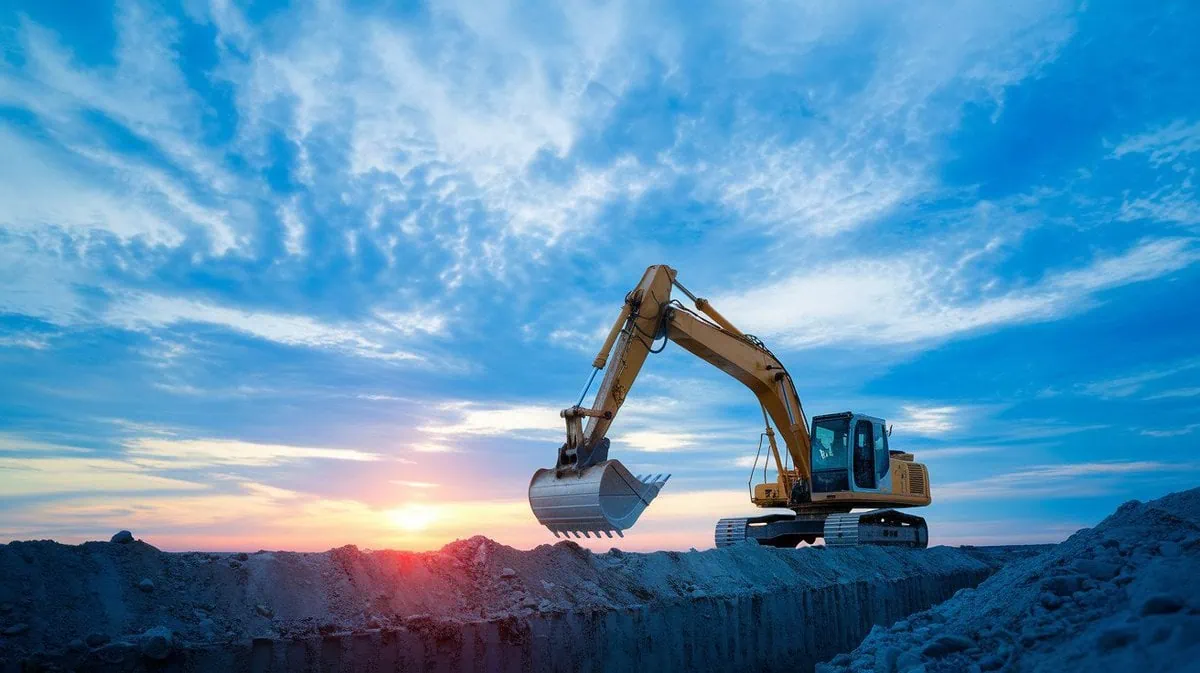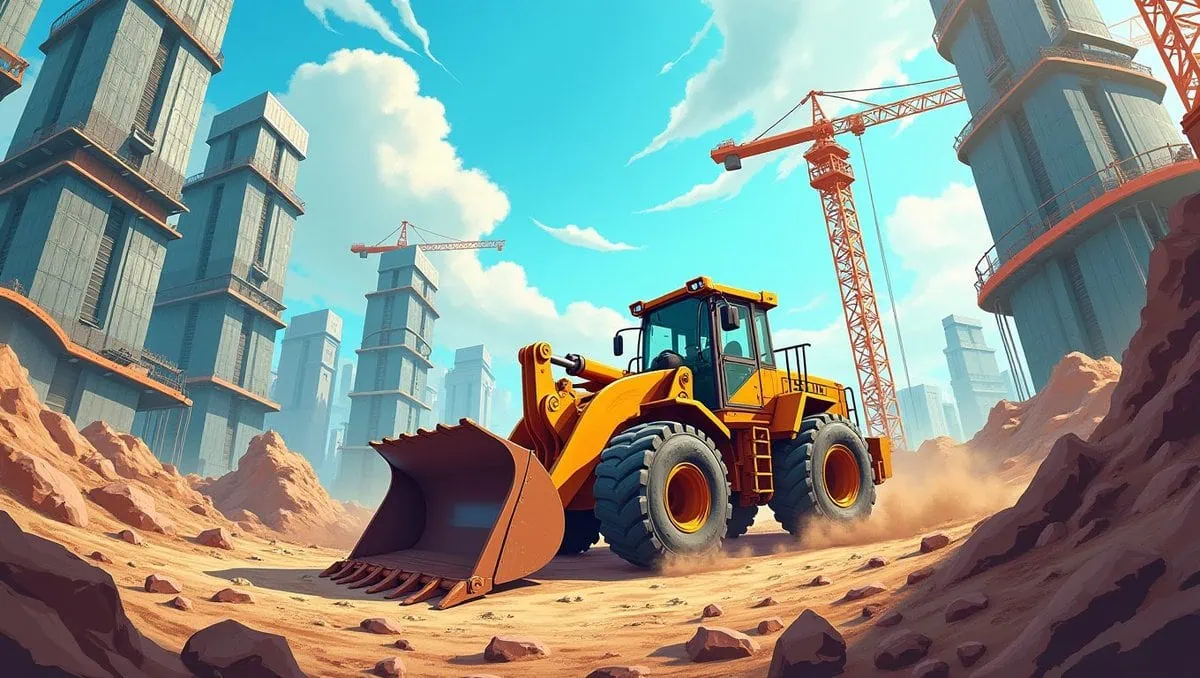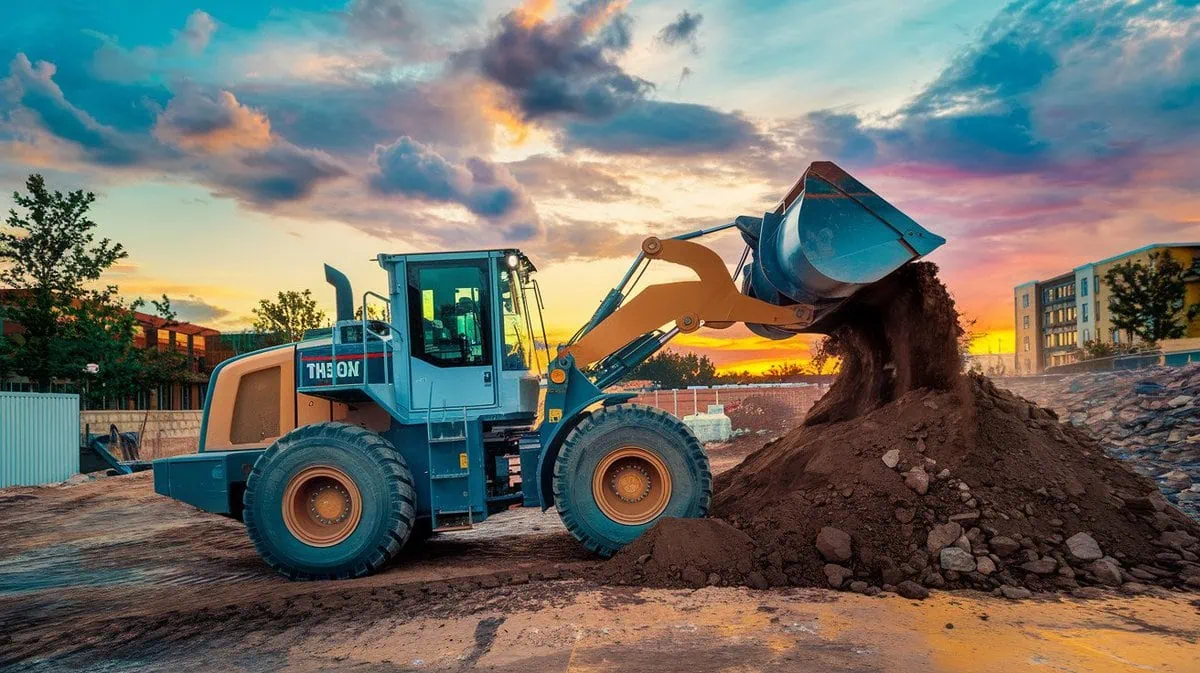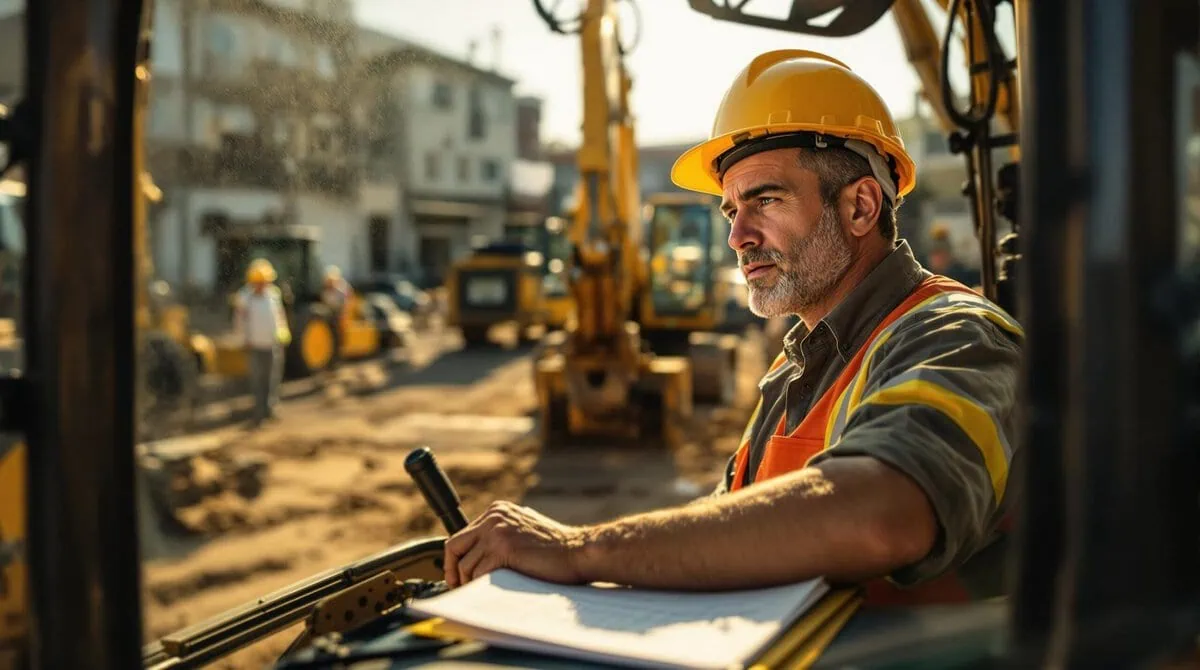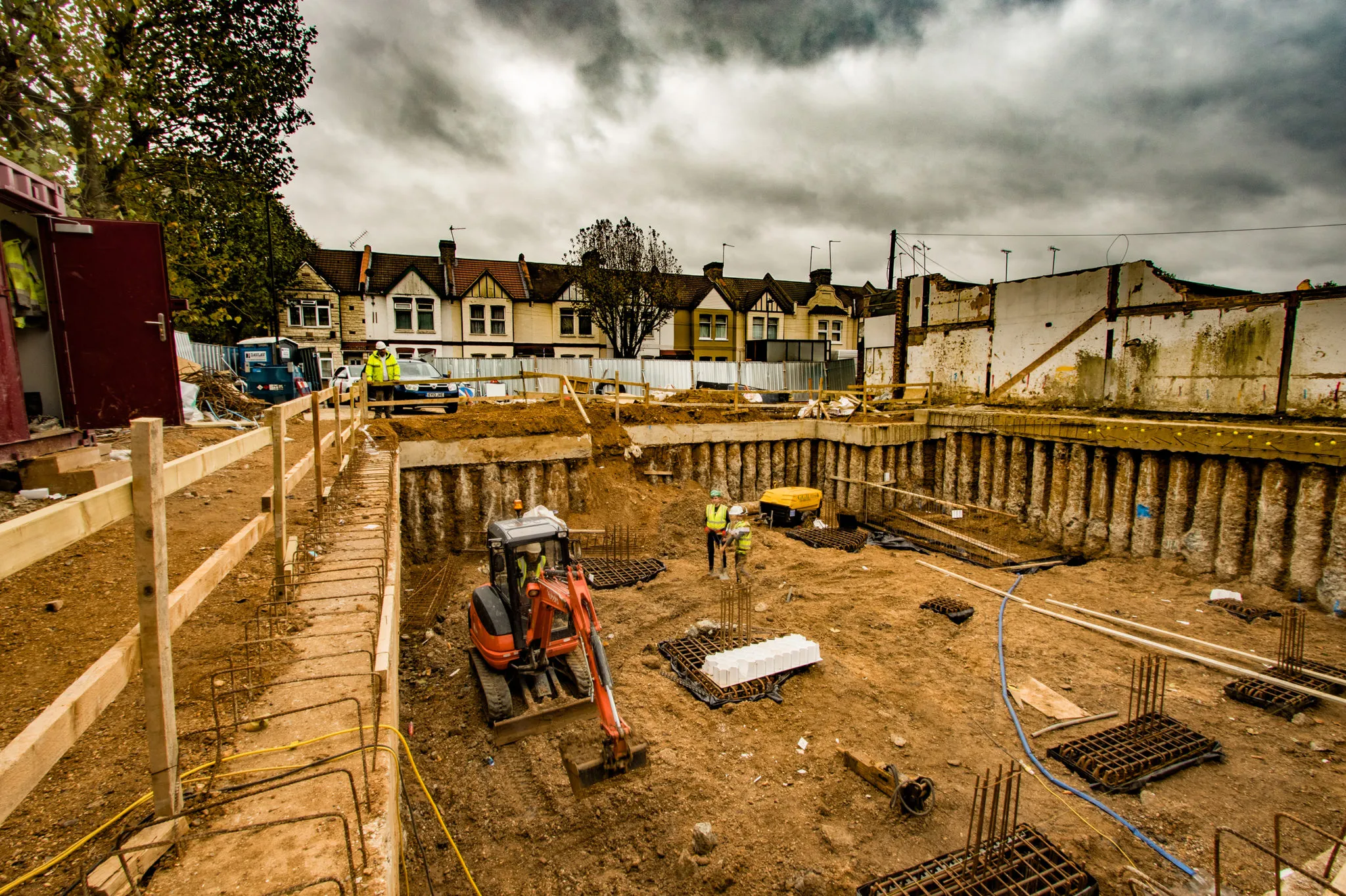Do you want to know more about the types of rollers? In construction projects, it is very important to choose the right road roller model. We recommend that you read this article carefully and try to choose a more suitable road roller model for your project.
Excavators, when paired with the right types of rollers, can significantly enhance project efficiency. Whether you’re dealing with compact soil or leveling surfaces, selecting the right roller can improve performance, reduce costs, and ensure better project outcomes. This guide will walk you through the best roller options for excavators.
Before we dig in, it’s worth noting that there are many different types of rollers that can be used, but we are only going to cover the top few.
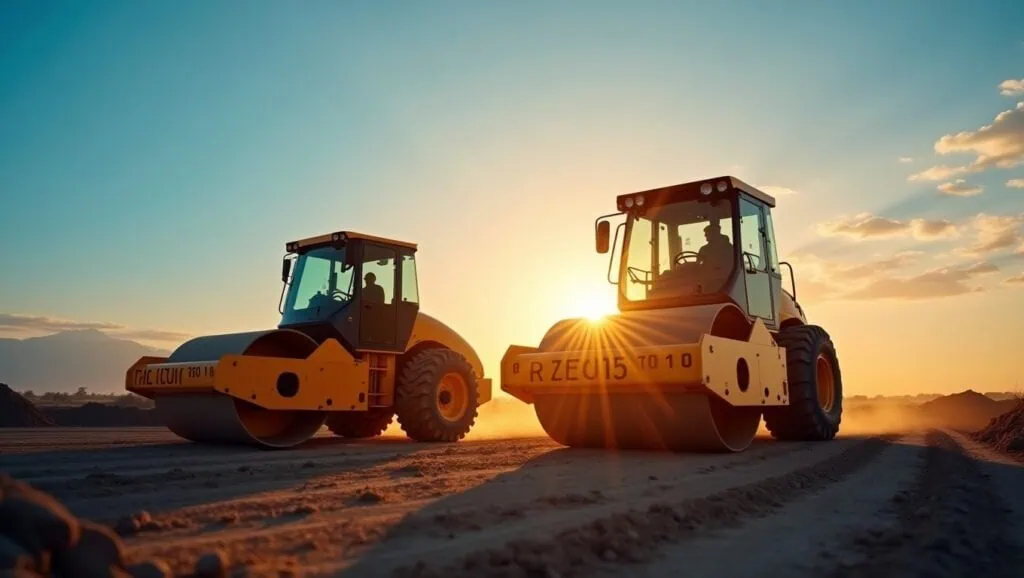
1,What are the five common types of rollers?
Even though there are several types of rollers available on the market. Given below are five common types of rollers used for construction projects:
Static Rollers
Static rollers are also referred to as smooth-wheeled rollers. They are one of the most common types of rollers you can find on road construction sites and at general construction sites.
They are further categorized into single drum rollers and double drum rollers:
Single Drum Rollers: –Some people also call them a three-wheeled roller, Padfoot rollers, or smooth rollers. With a steel drum in the front and two wheels in the back, they are perfect for tight spaces because they are smaller than double drum rollers.
Double Drum Rollers: –They are heavier than the single drum roller. Because of that, they are more expensive and a little more difficult to navigate. You should use a one for open spaces because they can compact the surface faster because each pass compacts the surface twice.
Vibratory Rollers
A vibratory roller has a smooth wheel roller and a vibrating mechanism. The vibration helps compact surfaces more efficiently because as the roller moves over the surface, the vibration helps the compaction process.
Vibratory rollers make quick work of compacting granular bases, crushed rock, gravel, sand, and asphaltic concrete. Manufacturers usually make and sell the unit as a vibratory roller model instead of a non-vibratory smooth wheel roller model.
Sheepsfoot Rollers
They are also known as padfoot rollers or tamping rollers. You can easily spot them by the raised lugs, or “feet” on the roller drum. The feet give a tamping action on the surface.
The feet ensure the change to the surface area of the roller drum, which enables the roller drum to put more pressure per square inch.
The roller can bulge to increase the pressure on the feet as needed by filling the drum with water or wet sand or another heavy material. Usually, you find them used with a silty or heavy clay type as well as the cohesive soil surfaces.
Grid Rollers
You can recognize them by the steel bars around the drum that are arranged in a grid pattern. They put high contact pressure on the solid.
They usually work on compacting the subgrade and the coarse soil and working on the subbase for road construction projects.
Typically, they tow them behind something like a tractor or a truck, another machine.
Trench Rollers
They are also known as multipurpose compacts or trench rollers. They work well in those cohesive soil types, which can be really hard to compact. These can be moved by a remote control, and there is no operator sitting or standing on the machine while it moves.
They can get high moisture content in the clays to compact down because they use the power compaction energy and the kneading effect from their padfoot drums.
They use them a lot in pipeline construction, commercial development and residential, and industrial development, structure backfill work if they have really hard-to-compact soils, tight or confined workspaces, electric and cable installation, and many times dump site or landfill job sites.
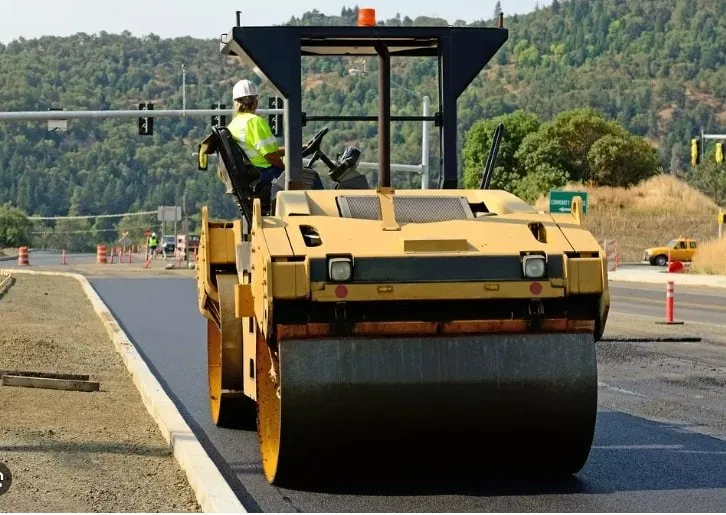
2. Which Types of Rollers Work Best with Excavators?
Choosing the right types of rollers for the job can make or break a project, especially when pairing it with an excavator. Whether you are doing road construction, building earthworks, or have some heavy-duty compaction needs, choosing the right types of rollers and knowing how to correctly attach it to your excavator is crucial to getting the results you want.
Rollers are essential for compacting soil, asphalt, and other materials in construction. By understanding the different types of rollers and their specific uses, you can select the best option to pair with your excavator, ensuring efficiency, precision, and cost-effectiveness in your projects.
When you select a roller you can attach to your excavator, the first thing you should think about is the kind of soil or surface you’re compacting. Rollers can broadly be divided into three categories: static, vibratory, and pneumatic. Each types of rollers has different uses depending on the material you’re trying to compact and the size of the area you’ll be compacting.
Static Rollers: You’ll want to use a roller like this when compacting light soil or sand. These are great for areas with less moisture or less cohesion. Simple in design, they’re good for straightforward tasks.
Vibratory Rollers: A vibratory roller, or vibratory compactor, uses high-frequency vibrations to compact the material. They are perfect for heavy-duty jobs such as roadwork and preparing a foundation. Used with an excavator, they are great for deep compaction of durable soils and granular materials.
Pneumatic Rollers: As the name implies, these rollers have multiple tires, providing a higher level of compaction. They’re great for projects needing to be uniformly compacted to produce a continuous, smooth su
Knowing these three broad categories will help you make an educated decision should you decide to purchase or rent a roller to work with your excavator.
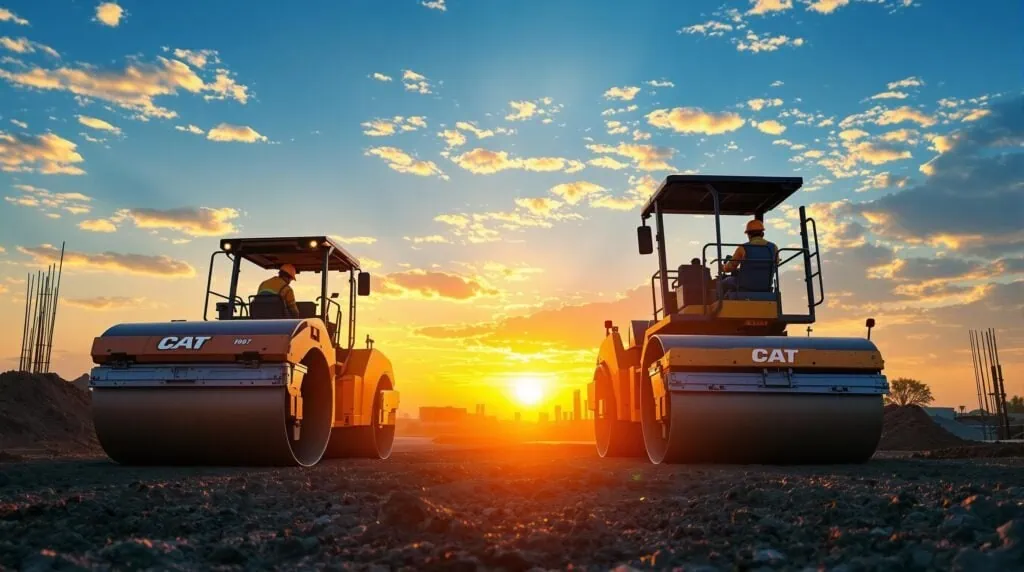
3. What Are the Benefits of Using a Tandem Roller with Excavators?
For fine, even compaction, the tandem types of rollers is the go-to choice. Teaming up a tandem roller with your excavator will let you get the job done faster and easier, ensuring a uniformly compacted surface area over a larger area.
The tandem rollers have two heavy drums (one on the front and one on the rear). These drums squeeze together and exert pressure on the surface area they’re working in. They are great for when you’re doing roads, parking lots, or areas where you have a lot of area to cover. Their operation when working with excavators is smooth. These rollers can create a nice, smooth, compacted surface that reduces the amount of time required to compact versus some of the smaller rollers.
These are great for working asphalt, or when matched with an excavator, they can quickly clean off any debris or blocks out of the way. The tandem rollers are relatively versatile. You can use them in both smooth and rough areas. These types of rollers give you great flexibility and allow you to have fewer pieces of heavy construction equipment on the job sites you’re working on.
The reason for that is these tandem rollers are more effective at compacting fine materials like gravel, stone, and sand. They are great if you’re working on roads, walkways, or foundation areas. Use a tandem roller to help finish off a surface with an excavator to get it ready for inclusion in your construction process. It’s one of the most popular types of rollers in world.
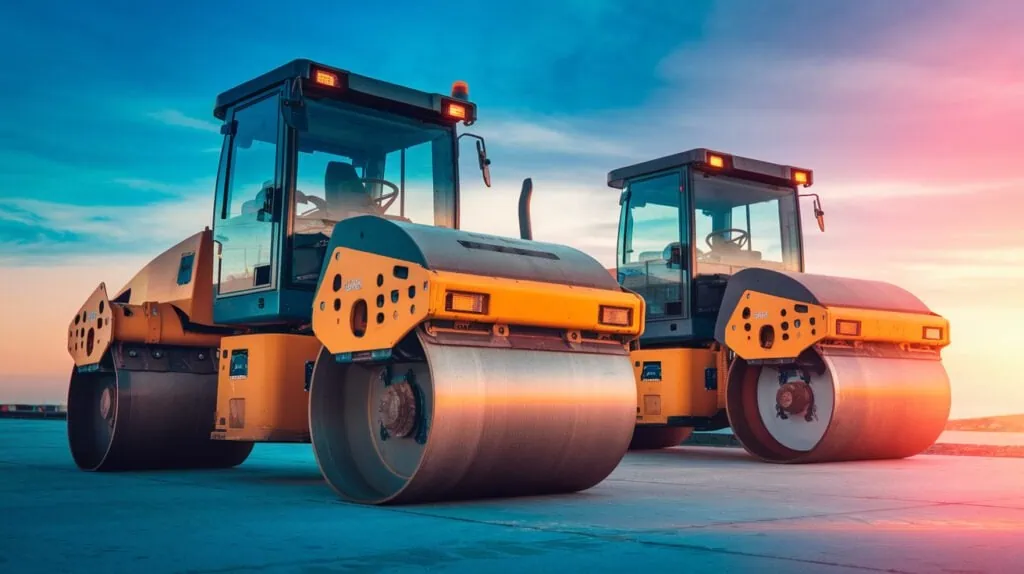
4. How Does a Vibratory Roller Work with Excavators?
The types of rollers use vibration to compact materials. The large ones are great to use when you have an excavator because you can typically get a lot accomplished if you know how to use them. The smaller ones use this vibration as a high-frequency oscillation that helps compact the surface area better. When you need to compact a lot of soil, gravel, stone, or anything where the density needs to be hard and thick, you always want to go with a vibratory roller.
The vibratory rollers work in two ways: they apply both the static weight of the roller as well as the dynamic weight of the vibration that goes into the ground. These are great to use when you have an excavator job. These vibratory rollers are perfect when working in either a lot of stone or really hard-packed soil. The advantage of these types of rollers is that they get excellent compaction very quickly.
Vibratory rollers are superb for compacting the soil for when you’re getting ready to start construction. They’re excellent for laying subgrades for your building, for laying road material, or for laying the base so you can pour concrete. They help smooth everything out. When you have an excavator job, vibratory rollers get the job done fast. A vibratory roller is a must-have, so you can have a quicker turnover on job sites and save money on the actual time and cost to dig and prepare the foundation for the house or building.
The vibration shakes the soil particles, driving them closer together as they fill in the voids. Once you achieve your goal in density and compaction, the risk of any future settlement is almost zero since it’s been compacted and shaken together. Fewer air pockets will develop once the soil is compacted, making it denser. This process is key during large infrastructure work like road beds, airport runways, and big bridges where you need that column of earth to be like a brick, consistent and stable.
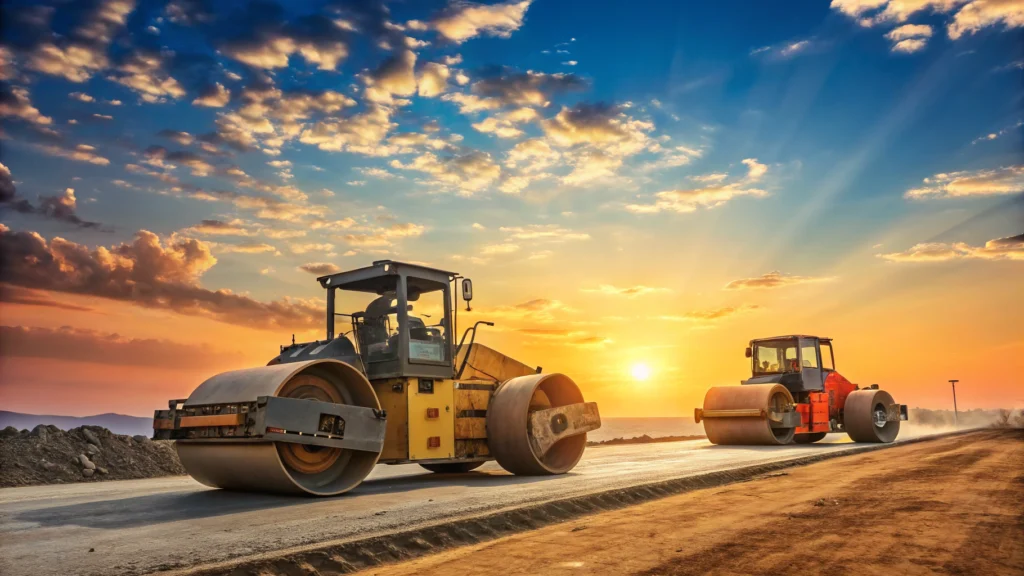
5. Can Excavators Be Used with Soil Compaction Rollers?
Soil compaction is one of the most crucial steps in any construction project. When you use a compaction roller combined with an excavator, it’s amazingly efficient for bringing in to compact material underneath roads, building lots, and other heavy structures. But how do you use this equipment effectively together for maximum results?
Soil compaction rollers are designed to compact soils and earth materials to whatever density you want them to be. When paired with an excavator, they ensure the job site is prepared and ready for work. They’re so quick that you can take a massive job-dirt field and make it ready for building on in a few days.
When you dig out there with a soil compaction roller, you usually are in the prep stage of a big jobs that’s going to be 20-50,000 sq. ft. of building. You roll in with your excavator, dig the site, level off the building spot, jump on your soil compaction roller, and compact the whole thing out flat and smooth. The roller rides right on top of those sticks and string, so you know the slope is consistent and proper.
And, there are different types of rollers compactors. Based on what you’re compacting, you choose between a smooth drum roller (for sand and gravel) or a pad foot roller (for clay and cohesive material). They’re both used with the excavator to do their job preparing to build whatever you plan to build.
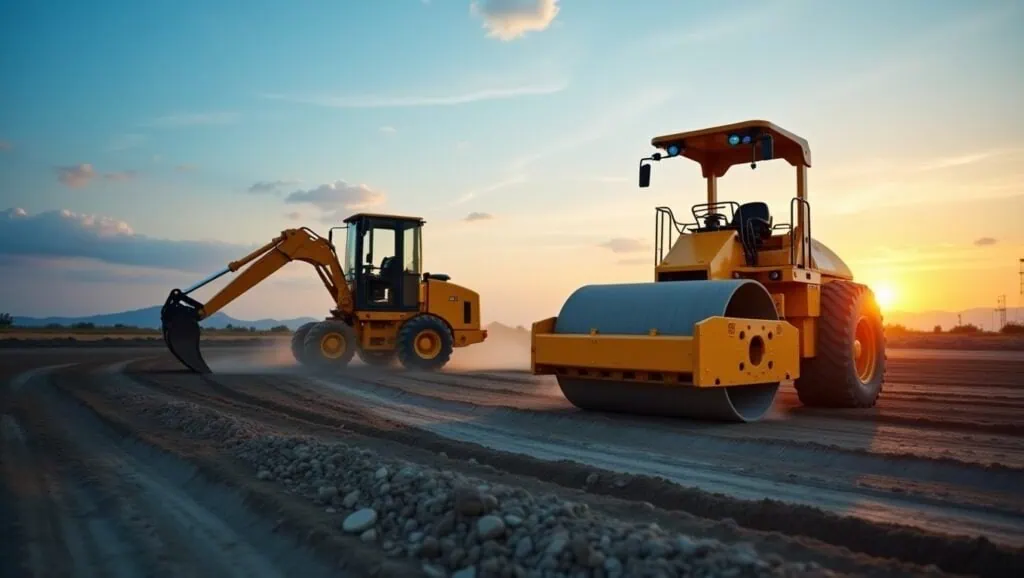
6. Are Pneumatic Rollers Suitable for Use with Excavators?
What’s a compaction roller? How about pneumatic rollers? Now, we’re digging a little deeper! Puppet shows get even better!
They are ideal because you need that even pressure across that big area to compact the soil. Do pneumatic rollers work with excavators? Absolutely! You’ll find pneumatic rollers next to excavators along interstate onramps, in front of hotels, or wherever they are working on the ground in a big way.
When you see a road being paved or two men and their skid steers joining the local union to pave a driveway, they have a pneumatic roller out there in the final phase of compaction. And, for our purposes, the final phase is when the excavator has moved all the mess out of the way and graded the site. They can use a pneumatic roller because you can’t tear up as much with them as you can with a steel wheel standing up.
So, when do you use a pneumatic roller with an excavator? When you want the surface smooth because you will compact without tearing it up. Hopefully, that gives you a pretty good idea where to use different types of rollers with excavators to get the ground solid and ready for whatever you’re going to build.
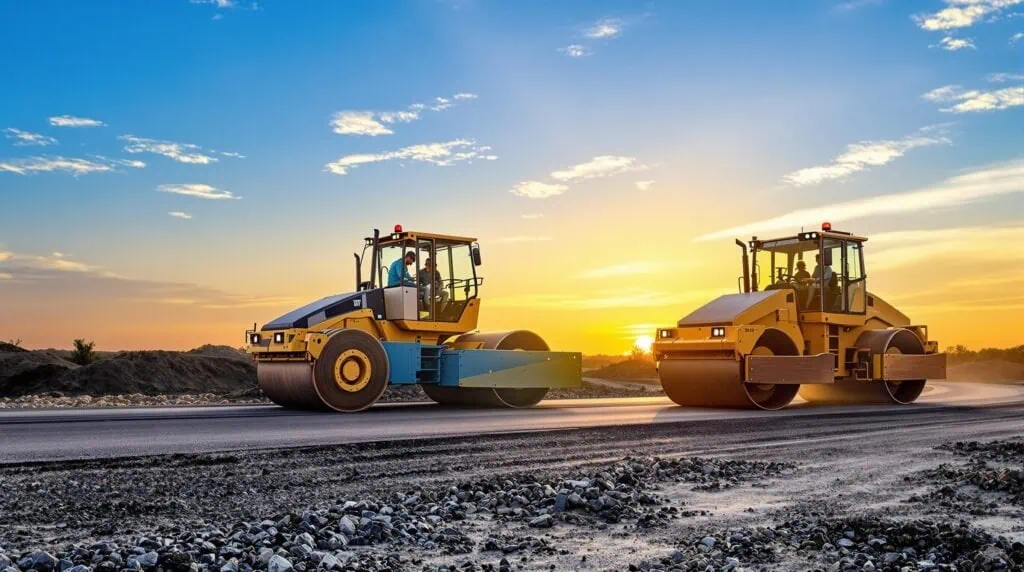
7. How to Choose the Right Roller to Pair with Excavators?
So how do you know which roller is best for your excavator? It hangs on what you’re doing, the kind of material, where you’re working, and some other factors. This chat and the brief descriptions helped you understand the three types of rollers available for an excavator. Now, in what context will you use them?
When selecting a roller to use with an excavator, consider the material being compacted, the compaction requirements, and the project timeline. Each types of rollers, whether static, vibratory, or pneumatic, has its advantages in specific situations. Matching the roller type to your excavator ensures the highest efficiency and productivity on the job site.
Typically, when you pick out a roller and you’re going to put it to work to compact dirt, clay, or whatever, the first thing you want to consider: what kind of soil or material am I rolling? If the material is something stable or consolidated like stone, vibratory rolling won’t accomplish much. If the soil is relatively loose, or you’re trying to get compaction down deep, vibratory rolling is the way to go.
In making your choice, you need to consider the size of the roller, the weight, and the range it operates in. It’s like anything. The bigger the roller, the more (and better) it’s going to compress or compact, which is what you want on most big projects. The smaller the roller, the smaller the space it can fit in and, generally, the more precisely you can get in and out of a project.
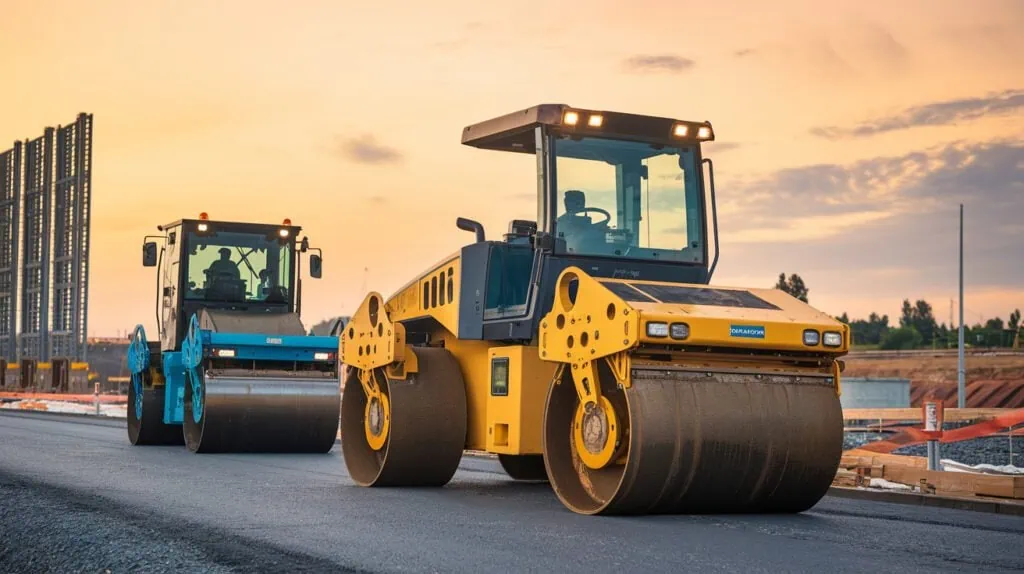
8,How to Choose the Right Roller for Excavator Use?
Be wise and make the right choice for the project you’ll do with an excavator and a roller. The last thing you want is a bad roller job. Your jobsite, the kind of material, and how much material you’re running through your excavator should guide you to the best choice for you.
So when you’re looking at types of rollers, understand the type of soil you’re working with, the size of project you have, if you’re running a roller with an excavator. Whether you’re running something through loose dirt or you have a material you want packed down, using the right roller lets you get everything packed tight and be more efficient in your jobs.
Selecting the right types of rollers for your excavator involves several considerations:
| Factor | Details |
| Site Conditions | Smaller rollers are ideal for urban or confined spaces, while larger rollers are best for expansive areas. |
| Soil Type | Granular soils benefit from vibratory rollers, while denser materials may need static rollers. |
| Project Scale | Large projects like highways require bigger rollers, while small residential roads can use compact ones. |
If you want things to run better and smoother, match the types of rollers you need with your excavator. The best combination of roller to run with your excavator allows you to get the best compaction. It’s like a force multiplier, making everything work more effectively.
Summary
So, make sure to choose the right types of rollers to run with your excavator to make your construction project more efficient and higher quality. Remember what types of rollers are out there, including a static roller, a vibratory roller, a pneumatic roller, or a tandem roller. Know when and why you would use each one. If you do that, you’re going to be much better at whatever it is you want to do with your excavator because you have the right roller or rollers running to do a better job. If you want more information about types of rollers, Contact with us now!

